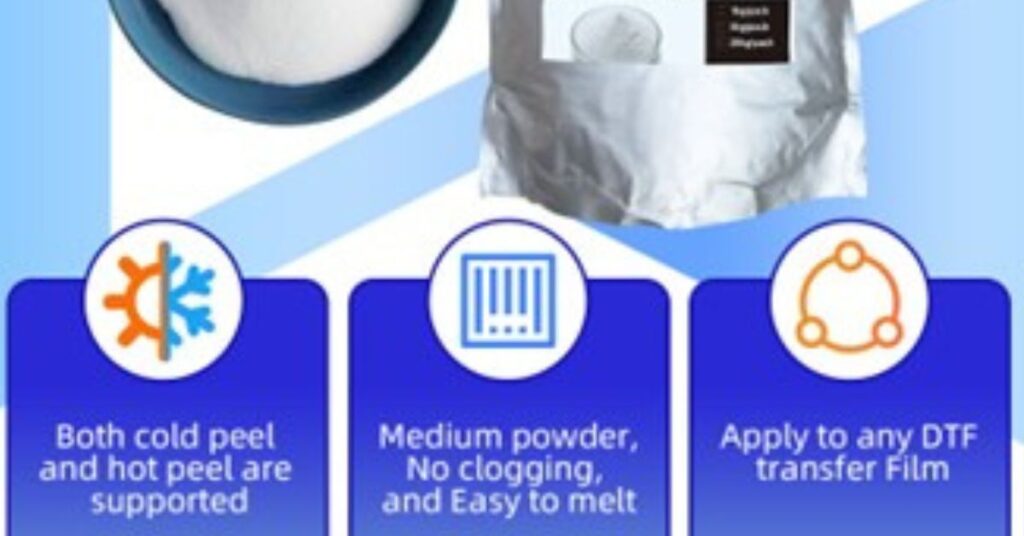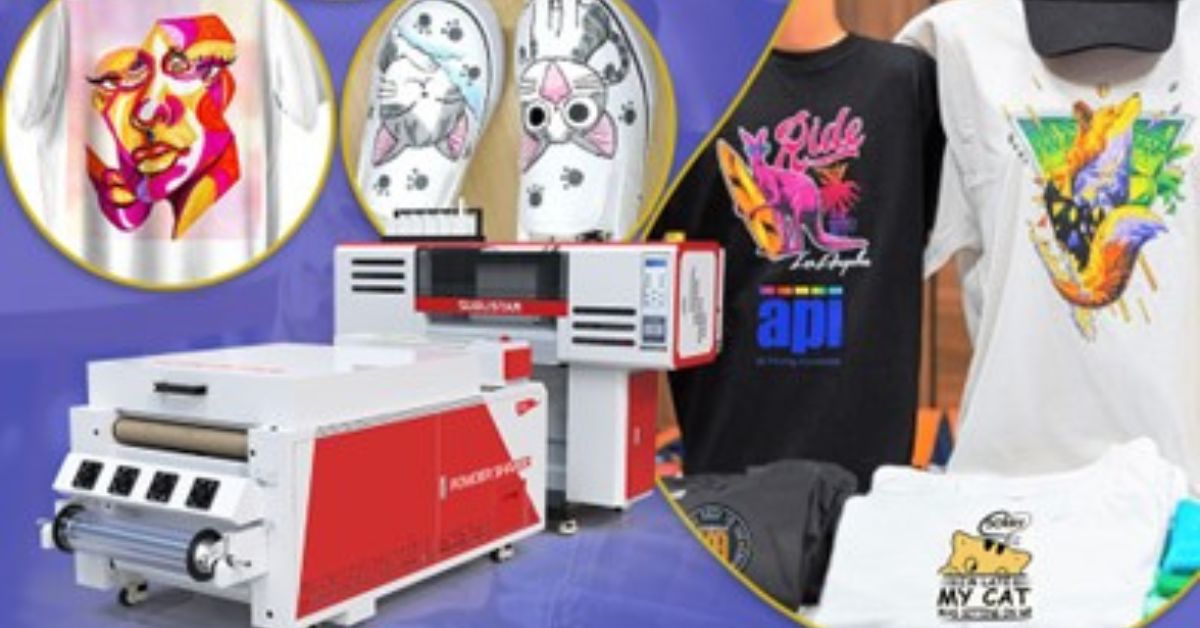In 2025, DTF printers will still have broad prospects for development. With its own advantages, and convenient printing methods are rapidly changing people’s consumption concepts and use habits. High technology, artificial intelligence, material diversification, a wide range of applications, and good market demand prospects will encourage the sustainable development of DTF printing.
High-tech development: efficient, intelligent
Improvement of printing speed and accuracy
In 2025, SUBLISTAR continues to offer higher quality DTF printers, 1200mm wide multi-head printers, from the original maximum 4 head machine to 5 head machine. With the improvement of inkjet technology, the injection frequency and ink control ability of the print head will be significantly improved, allowing DTF printers to complete high-quality pattern printing in a shorter time. Faster speed and higher print resolution. At the same time, the twelve-color application scheme will gradually be known by customers, which can better meet consumers’ requirements for details and colors.
Intelligence and automation
In 2024, SUBLISTAR launched a 4-station heat press, which was later upgraded to a 6-station heat press. It can achieve 3-5 seconds of pressing, repressing, and film a piece of clothing at the same time. Greatly improve the efficiency of pressing. Of course, printing efficiency has been achieved in the above description. Cutting can also be accelerated by adding a smart sensor to the tail of the DTF printer that connects to the cutting machine. The cutting machine automatically cuts in time according to the pattern, and only a few people need to place the film on the operating table of the heat press at 6 stations. Most jobs are automated by machines.
Application and promotion of environmental protection technology
The importance of environmental protection in various countries has further promoted the updating of technology, and the environment of DTF printers is becoming more and more optimized. The original DTF printer produced a lot of smoke during the printing process, which was very bad for the health of employees. SUBLISTAR gradually developed from the original external purifier to a built-in permanent purifier, which can effectively remove smoke. And with the use of a variety of environmental protection consumables, it can further achieve the goal of green environmental protection.
Innovation in consumables: wider and more environmentally friendly options
High-performance ink was successfully developed
Ink is one of the core consumables for DTF printing. By 2025, breakthrough progress will be made in the research and development of high-performance inks. The new ink will have stronger adhesion, a wider color gamut, and better washable and light resistance. In addition, SUBLISTAR currently has two special inks, one is non-precipitation ink and the other is transparent ink. Non-precipitation ink is effectively resistant to nozzle blockage, reduce the frequency of nozzle maintenance, and prevent the machine from stopping work for a long time. Transparent ink is professionally used in all kinds of washed labels, or small letters, small lines, small logos and other small patterns. In addition, functional inks for special needs (such as fluorescent effects, metallic texture) will also be more abundant.
Continuous renewal of DTF feature film
The feature film of DTF printing will be more diversified to adapt to different application scenarios. For example, glow-in-the-dark film and high-gloss reflective film are suitable for people who walk and work at night, rainbow reflective film is very suitable for stage performances, hot stamping film is more suitable for high-end business people to highlight the identity and so on. At the same time, recyclable and degradable film materials are being developed, which will further promote the sustainable development of DTF printing.

The improvement of hot melt powder and the emergence of substitutes
Hot melt adhesive powder is an indispensable material in DTF printing, and its properties directly affect the adhesion and durability of patterns. In 2025, hot melt adhesive powder will develop in the direction of lower melting point, stronger adhesion and more environmental protection. The new rubber powder can not only achieve efficient transfer at low temperatures, but also reduce energy consumption, thereby reducing production costs.
At present, SUBLISTAR has introduced a DTF printer that does not need hot melt powder, and the material that replaces the hot melt powder is a special glue. Reducing the use of hot melt powder can effectively reduce the spillover of dust and be more friendly to the air environment.
Application expansion: from textile to multi-field penetration
The in-depth application of the garment industry
DTF printing technology will continue to play an important role in the apparel industry. By 2025, as the technology matures and costs are further reduced, DTF printing will be widely used in fast fashion, sportswear and personalized customization. Its ability to achieve cost-effective advantages in small batch production will make it the first choice for designer brands and small and medium-sized enterprises.
Innovative application of home and decoration
In addition to the clothing industry, DTF printing technology will also be widely used in the field of home and decoration. For example, customized curtains, cushions, tablecloths, floor MATS, screens and other household items will become a new growth point. In addition, DTF printing can also be used to create personalized wall fabric paper and decorative fabric paintings to meet consumers’ needs for unique home styles.
Breakthroughs in functional textiles
In the industrial sector, DTF printing technology will be used to produce functional textiles, with a variety of waterproof fabrics, such as UV protection, water resistance, anti-stretching and other special properties of clothing and equipment. In addition, DTF printing can also be used to make industrial products such as outdoor advertising banners, further expanding its application range.
Market trend: Globalization and personalization coexist
The expansion of global markets
In 2025, DTF printing technology will be more widely used worldwide. With the reduction of equipment costs and the improvement of production efficiency, developing countries and regions will become an important growth point of the DTF printing market. At the same time, international brands and manufacturers will increase their investment in DTF printing technology and promote its globalization.
The concept of individuation is deeply rooted in people’s hearts
The concept of individuation has been known by the public, everyone wants to have their own unique clothes, and not the same as others, wearing it is not embarrassing. Even before 2025, personalization was a service reserved for the wealthy. Now, the public can afford to buy their own custom-made specialty clothing. DTF printing will be more popular in e-commerce platforms and offline stores, and consumers can easily customize their own unique products through online design tools. This “production on demand” model not only reduces inventory pressure, but also increases consumer satisfaction.
Integration and optimization of the industrial chain
With the maturity of DTF printing technology, the upstream and downstream of the industrial chain will be more closely integrated. For example, manufacturers of inks, transfer films and equipment will strengthen cooperation to introduce more compatible and efficient solutions. In addition, the rise of third-party service platforms (such as design software, logistics distribution) will provide a full range of support for the DTF printing industry.
Challenges and opportunities
Technical challenges
Although DTF printing technology has great prospects, it still faces some technical challenges. For example, how to further improve the printing speed and accuracy on the basis of the original high speed, how to reduce equipment maintenance costs, how to maintain the nozzle for a long time without blocking the state. These technical challenges require continued research and development and innovation within the industry.
Market competition
With the popularity of DTF printing technology, market competition will become increasingly fierce, many enterprises are constantly reducing their own equipment prices, equipment manufacturers and material suppliers need to maintain competitive advantages through technological innovation and cost control. At the same time, brands and service providers also need to continuously improve the user experience to win more market share.
Sustainable development
Environmental protection and sustainable development will become an important issue in the DTF printing industry. How to ensure the quality of products while reducing the impact on the environment will be one of the major challenges facing the industry. By developing environmentally friendly materials and optimizing production processes, the DTF printing industry is expected to make breakthroughs in sustainable development.
In 2025, DTF printing technology will usher in comprehensive progress in technology, materials, applications and markets. With the improvement of printing speed and accuracy, the popularization of intelligent production and the application of environmentally friendly materials, DTF printing will become an important pillar of the textile printing industry. At the same time, its wide application in the fields of clothing, home and industry, as well as the expansion of the global market and the rise of personalized customization, will bring great development opportunities for it. Despite technical challenges and market competition, the future of DTF printing technology is still promising. Through continuous innovation and optimization, DTF printing is expected to achieve greater development in 2025.
Also Read: The Enigma of Korpenpelloz: A Journey into Mystical Realms

